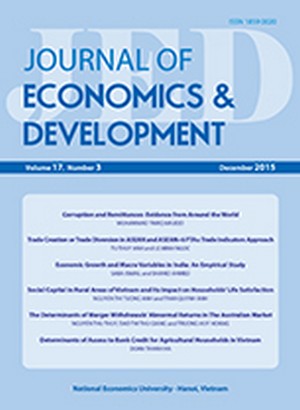Trade Creation or Trade Diversion in ASEAN and ASEAN+6 FTAs: Trade Indicators Approach
Abstract
This paper makes use of two trade indicators, Revealed Comparative Advantage (RCA) and Regional Orientation (RO), to evaluate the economic impacts of the ASEAN Free Trade Area (The) and the Regional Comprehensive Economic Partnership (RCEP) on Vietnamese commodities at the Harmonized System (HS) 2-digit level. Several sectors in which Vietnam has revealed a comparative advantage, has benefited from the AFTA, and would continue to enjoy trade creation from the RCEP, are: Cereals (10), Salt, sulphur, earth, stone, plaster, lime and cement (25), Rubber (40), Knitted or crocheted fabric (60), etc. More importantly, the result provides a list of commodities in which Vietnam has a comparative advantage and only experiences trade creation when participating in the RCEP. These are: Milling products, malt, starches, inulin, wheat gluten (11), Vegetable plaiting materials, vegetable products not elsewhere specified (14), Wood and articles of wood, wood charcoal (44), etc. Findings also show commodities in which Vietnam has a comparative advantage; but are not well positioned in the RCEP market yet, e.g. Cereal, flour, starch, milk preparations and products (19) and Manmade staple fibres (55). If sufficient investment decisions and marketing strategies are applied to these commodities, they will well penetrate the RCEP market and bring trade creation and welfare improvement to Vietnam. Public and private investment should consider the above-mentioned commodities as targets to leapfrog the benefits of RCEP.

